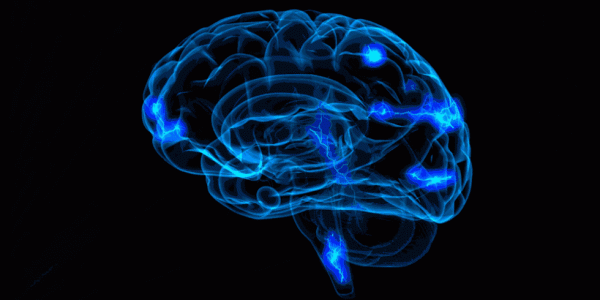Grief Relapse: when we Can't Move On


Written and verified by the psychologist Valeria Sabater
Relapses of grief happen more often than you would think. Far from seeing it as a setback, we should think of it as a normal part of the grieving process. Taking two steps back can be the best way to get the momentum to move forward. In the end, no one gets over grief in two days. It’s a long journey, and it’s common to stop and have setbacks.
Therapists with experience treating depression, anxiety disorders, addiction, and other mental illnesses all have something in common. They know that the clinical treatment strategy for their patients should include a good program to prevent relapse. And it is just as important for the patient to keep in mind the possibility of a relapse.
“Your emotions shouldn’t paralyze you. They shouldn’t be defensive. They shouldn’t stop you from being everything you can be.”
-Wayne W. Dyer-
A grieving person often hopes that this grim stage passes as quickly as possible. Above all, they want the moment to come when they can breathe without pain and sleep for a few hours straight without waking up in tears. We often think of the recovery process as a straight line. Every step takes us closer to the finish line.
However, it doesn’t always work that way. It is important to remember that. It’s not uncommon that at some point, without understanding exactly why, we end up taking two steps backward. Or worse, we end up back where we started. To prevent that from happening and to avoid suffering a relapse worse than the original event, we have to take action. We must be prepared with an “arsenal” of measures that protect us and a resource that helps us move forward.

Why does relapse happen during the grieving process?
According to a study from Biological Psychiatry magazine, the way we process information determines whether or not we experience a relapse. For example, something that we can see on an MRI is that there are different “types” of brains. Some are more capable than others at reacting to traumatic, complex, or challenging events.
There are people who deal better with grief because they have a more resistant mental focus. Their thought patterns are more resilient and flexible at the same time. Other people are slower to process grief. They experience more setbacks because they tend to ruminate and get fixated on certain negative thoughts. Also, they process stimuli in a more negative way. That means that they experience greater mental exhaustion. The patient gets stuck and has a hard time advancing because they are expending a lot of energy.
Now, just because there are different ways to process information and disparate mental approaches, doesn’t mean that some people are doomed to suffer a grief relapse and others aren’t. If there is one thing we know about the brain, it’s that it has amazing plasticity, and we can train it. It is possible to mold it and take off those edges that make us more vulnerable. We can all achieve it. Let’s see how…

Strategies to avoid a grief relapse
As we said before, good psychologists and health professionals know that they have treat patients on two levels. This is true whether we are talking about an illness, a disorder, or a problematic event. They must develop an intervention strategy and a plan to avoid relapse. It is important to maintain the patient in a state where they can find strength and encouragement to keep going.
Next, we invite you to reflect on some of the strategies that you can apply on a day-to-day basis.
Accept the possibility that you might have a relapse during the grieving process
Sometimes, circumstances force us to start over. A loss, whether it is physical or emotional, implies a kind of fall. It is a time of grieving in which everything falls apart around us and we have to build ourselves back up again. We have to learn how to walk one more time.
During this process, taking two steps forward and one step back is very common. Don’t see it as a problem, or take it as a sign that moving forward will be impossible. Understand that sometimes you have to take a step back to get the momentum to spring forward.
Relapses take many forms
We must be aware of all the different forms a relapse can take. If we are prepared, we can react a little more quickly.
- Relapses often happen when we are in a bad mood.
- A relapse might make you feel tired and like you have no energy. However, it can also make you feel like you need to be constantly busy. You have to stay occupied so you “don’t think.”
- You should also be careful about substance abuse. Some people feel the need to start drinking or might rely on consuming certain drugs.

Mindfulness to prevent relapse
The practice of mindfulness can be very useful for people who have experienced depression. If you are grieving or even trying to get over an addiction, mindfulness is a helpful strategy. It helps you develop better mental control, and also opens a powerful channel to deal with emotional distress.
- Likewise, mindfulness can be especially helpful to regulate negative or ruminating thought patterns. It gives you inner calm and better regulation of emotions like anger, frustration, or sadness.
- On the other hand, being present helps the patient to have a good internal dialogue. He will be able to react better and understand his needs, fears, and anxieties because he will be connected to himself.
Lastly, it’s worth mentioning that the practice of mindfulness requires consistency. It is important to introduce it to your daily routine. That way, it will be truly beneficial and help you avoid a relapse.
Relapses of grief happen more often than you would think. Far from seeing it as a setback, we should think of it as a normal part of the grieving process. Taking two steps back can be the best way to get the momentum to move forward. In the end, no one gets over grief in two days. It’s a long journey, and it’s common to stop and have setbacks.
Therapists with experience treating depression, anxiety disorders, addiction, and other mental illnesses all have something in common. They know that the clinical treatment strategy for their patients should include a good program to prevent relapse. And it is just as important for the patient to keep in mind the possibility of a relapse.
“Your emotions shouldn’t paralyze you. They shouldn’t be defensive. They shouldn’t stop you from being everything you can be.”
-Wayne W. Dyer-
A grieving person often hopes that this grim stage passes as quickly as possible. Above all, they want the moment to come when they can breathe without pain and sleep for a few hours straight without waking up in tears. We often think of the recovery process as a straight line. Every step takes us closer to the finish line.
However, it doesn’t always work that way. It is important to remember that. It’s not uncommon that at some point, without understanding exactly why, we end up taking two steps backward. Or worse, we end up back where we started. To prevent that from happening and to avoid suffering a relapse worse than the original event, we have to take action. We must be prepared with an “arsenal” of measures that protect us and a resource that helps us move forward.

Why does relapse happen during the grieving process?
According to a study from Biological Psychiatry magazine, the way we process information determines whether or not we experience a relapse. For example, something that we can see on an MRI is that there are different “types” of brains. Some are more capable than others at reacting to traumatic, complex, or challenging events.
There are people who deal better with grief because they have a more resistant mental focus. Their thought patterns are more resilient and flexible at the same time. Other people are slower to process grief. They experience more setbacks because they tend to ruminate and get fixated on certain negative thoughts. Also, they process stimuli in a more negative way. That means that they experience greater mental exhaustion. The patient gets stuck and has a hard time advancing because they are expending a lot of energy.
Now, just because there are different ways to process information and disparate mental approaches, doesn’t mean that some people are doomed to suffer a grief relapse and others aren’t. If there is one thing we know about the brain, it’s that it has amazing plasticity, and we can train it. It is possible to mold it and take off those edges that make us more vulnerable. We can all achieve it. Let’s see how…

Strategies to avoid a grief relapse
As we said before, good psychologists and health professionals know that they have treat patients on two levels. This is true whether we are talking about an illness, a disorder, or a problematic event. They must develop an intervention strategy and a plan to avoid relapse. It is important to maintain the patient in a state where they can find strength and encouragement to keep going.
Next, we invite you to reflect on some of the strategies that you can apply on a day-to-day basis.
Accept the possibility that you might have a relapse during the grieving process
Sometimes, circumstances force us to start over. A loss, whether it is physical or emotional, implies a kind of fall. It is a time of grieving in which everything falls apart around us and we have to build ourselves back up again. We have to learn how to walk one more time.
During this process, taking two steps forward and one step back is very common. Don’t see it as a problem, or take it as a sign that moving forward will be impossible. Understand that sometimes you have to take a step back to get the momentum to spring forward.
Relapses take many forms
We must be aware of all the different forms a relapse can take. If we are prepared, we can react a little more quickly.
- Relapses often happen when we are in a bad mood.
- A relapse might make you feel tired and like you have no energy. However, it can also make you feel like you need to be constantly busy. You have to stay occupied so you “don’t think.”
- You should also be careful about substance abuse. Some people feel the need to start drinking or might rely on consuming certain drugs.

Mindfulness to prevent relapse
The practice of mindfulness can be very useful for people who have experienced depression. If you are grieving or even trying to get over an addiction, mindfulness is a helpful strategy. It helps you develop better mental control, and also opens a powerful channel to deal with emotional distress.
- Likewise, mindfulness can be especially helpful to regulate negative or ruminating thought patterns. It gives you inner calm and better regulation of emotions like anger, frustration, or sadness.
- On the other hand, being present helps the patient to have a good internal dialogue. He will be able to react better and understand his needs, fears, and anxieties because he will be connected to himself.
Lastly, it’s worth mentioning that the practice of mindfulness requires consistency. It is important to introduce it to your daily routine. That way, it will be truly beneficial and help you avoid a relapse.
This text is provided for informational purposes only and does not replace consultation with a professional. If in doubt, consult your specialist.







